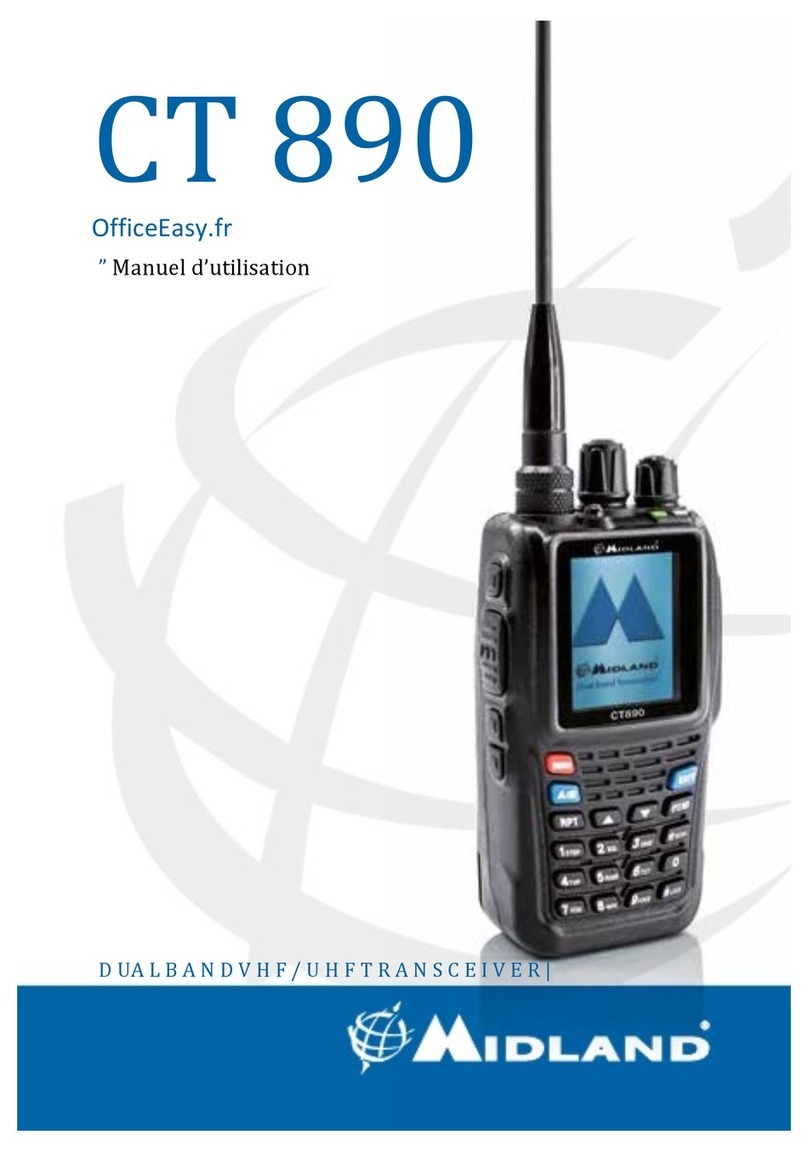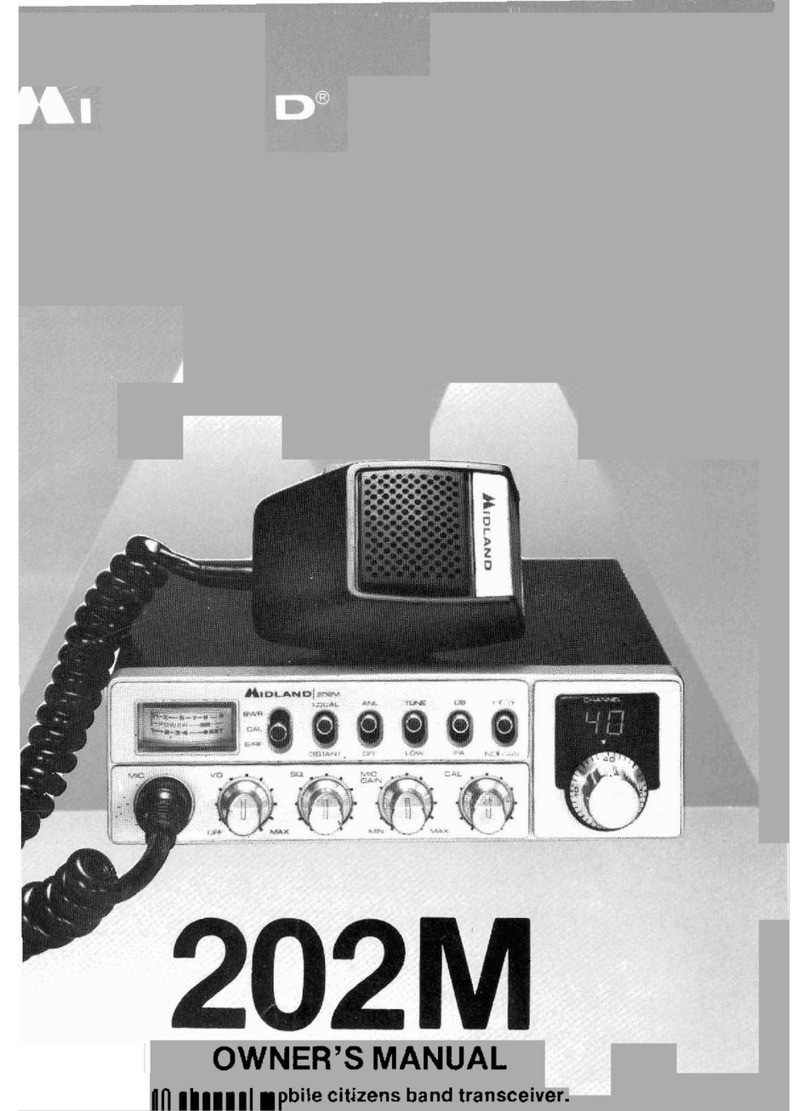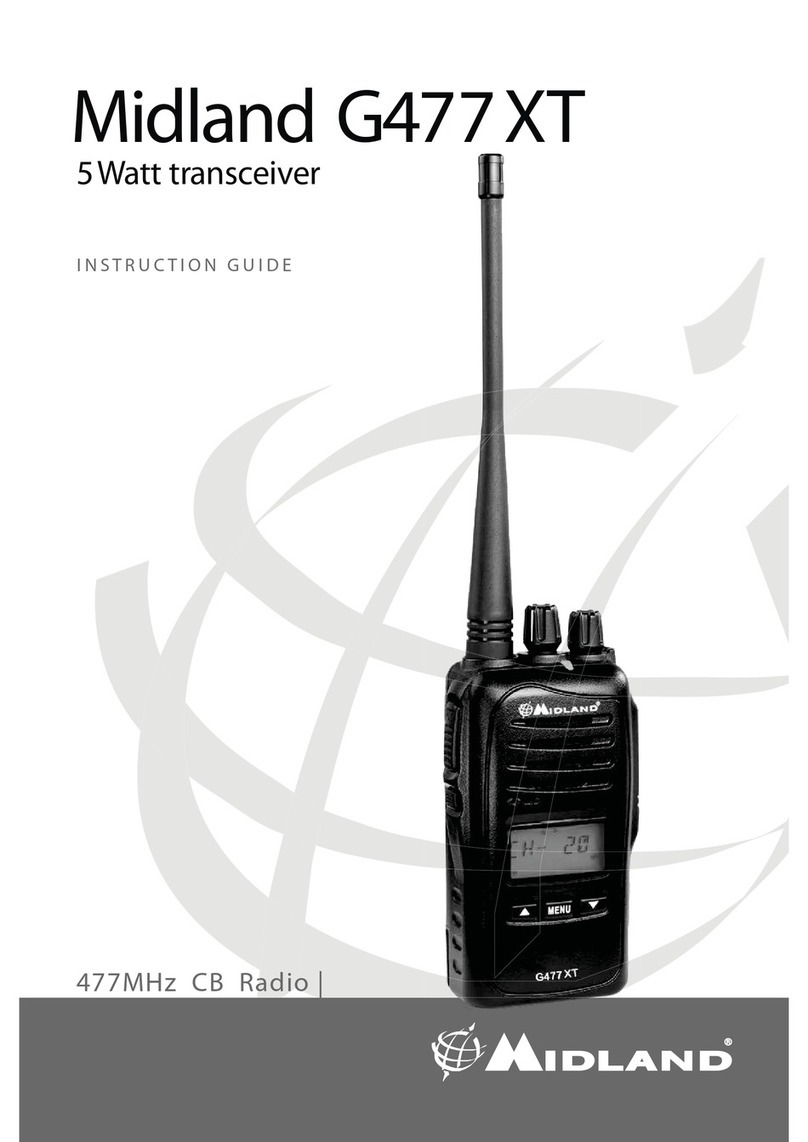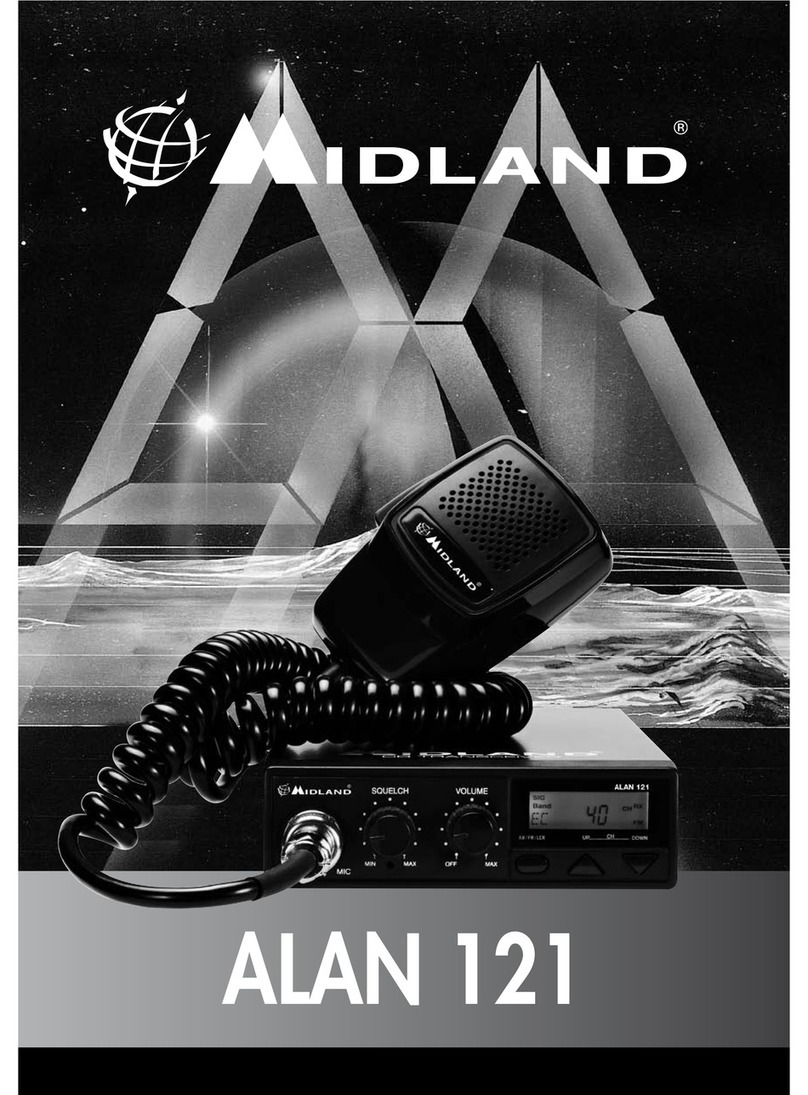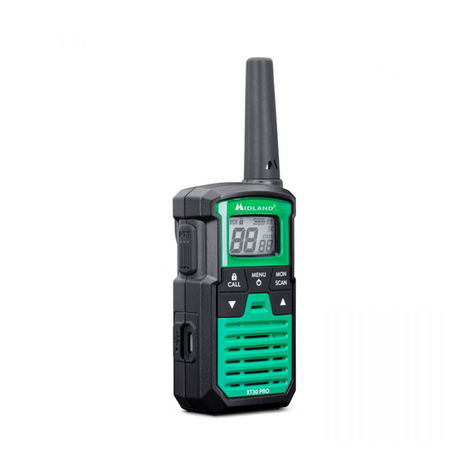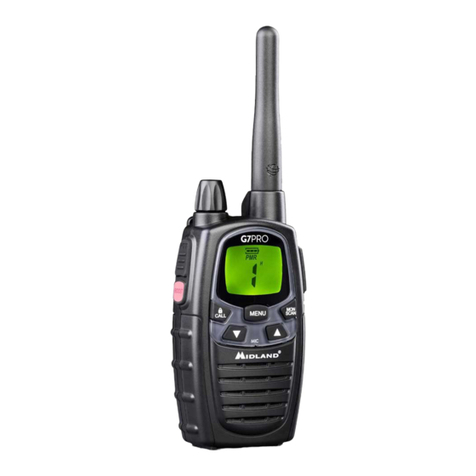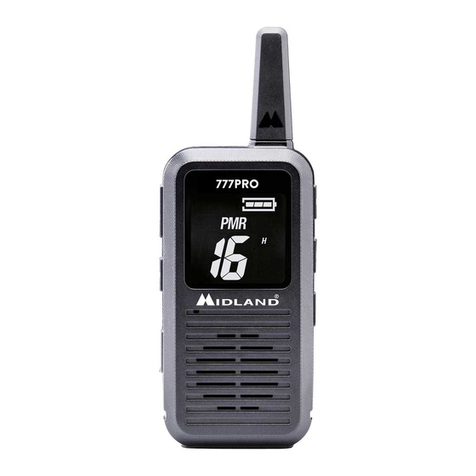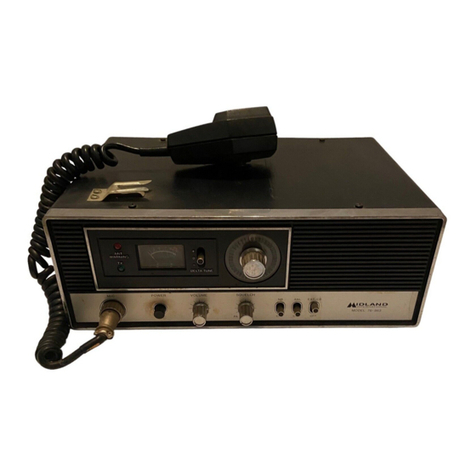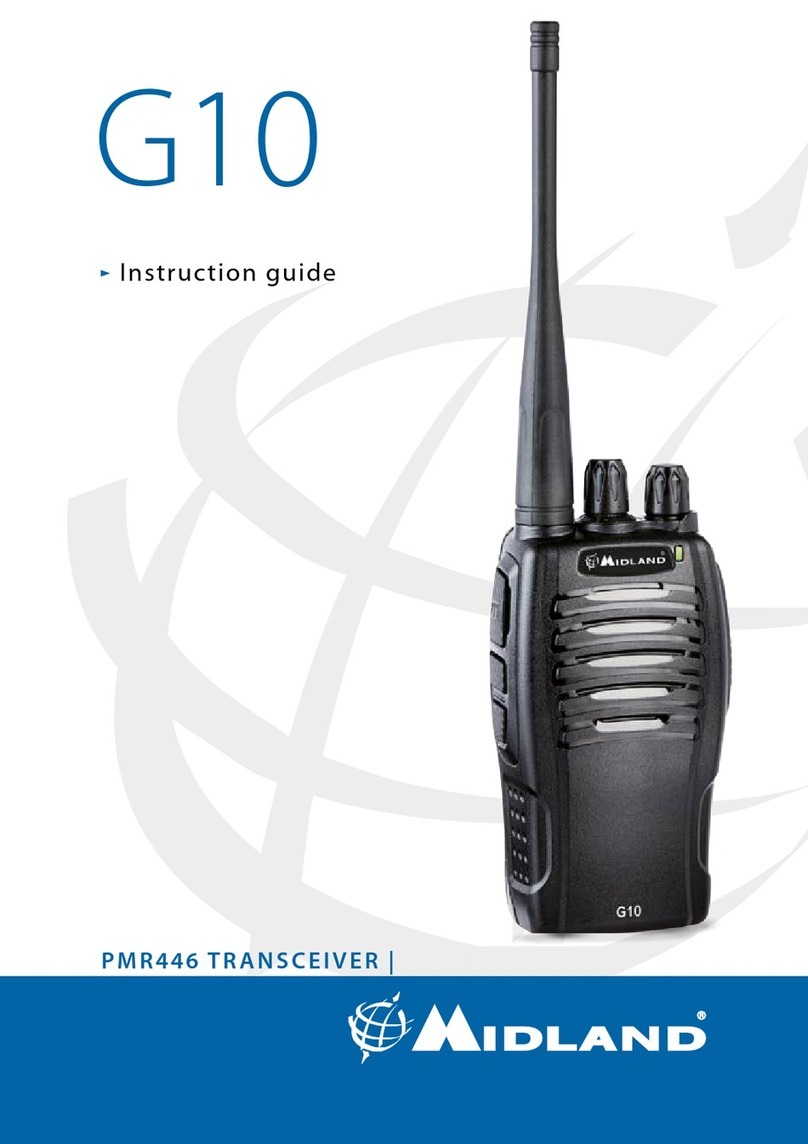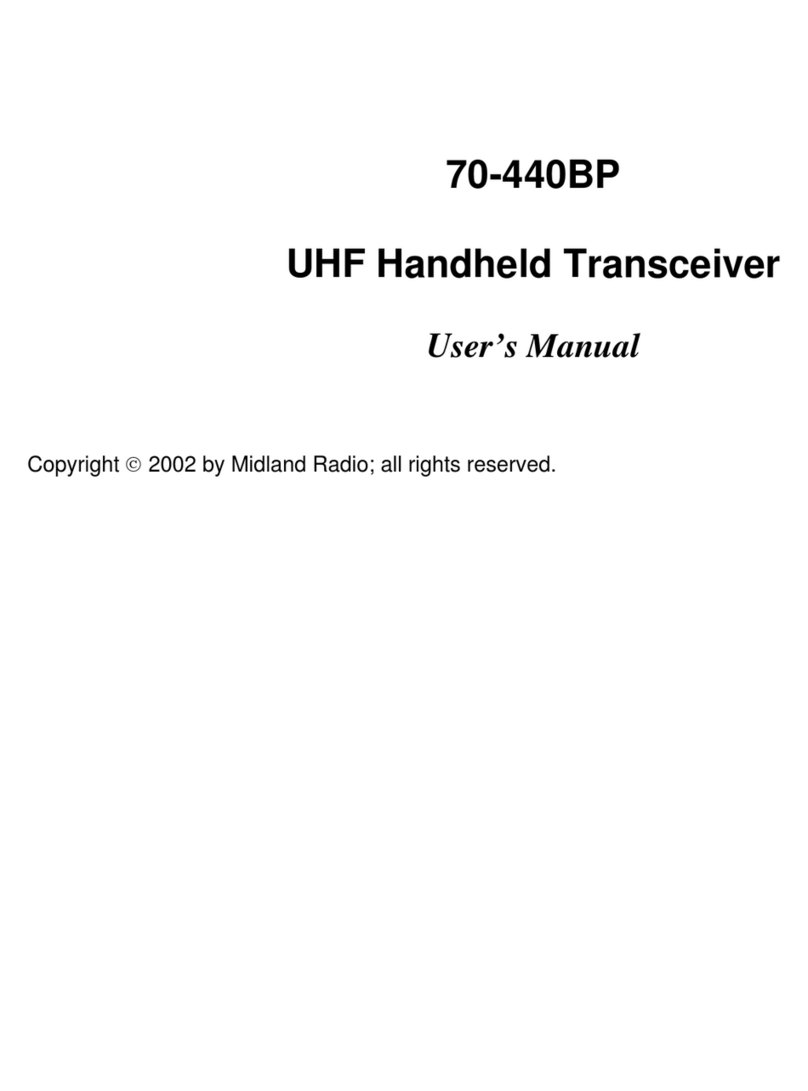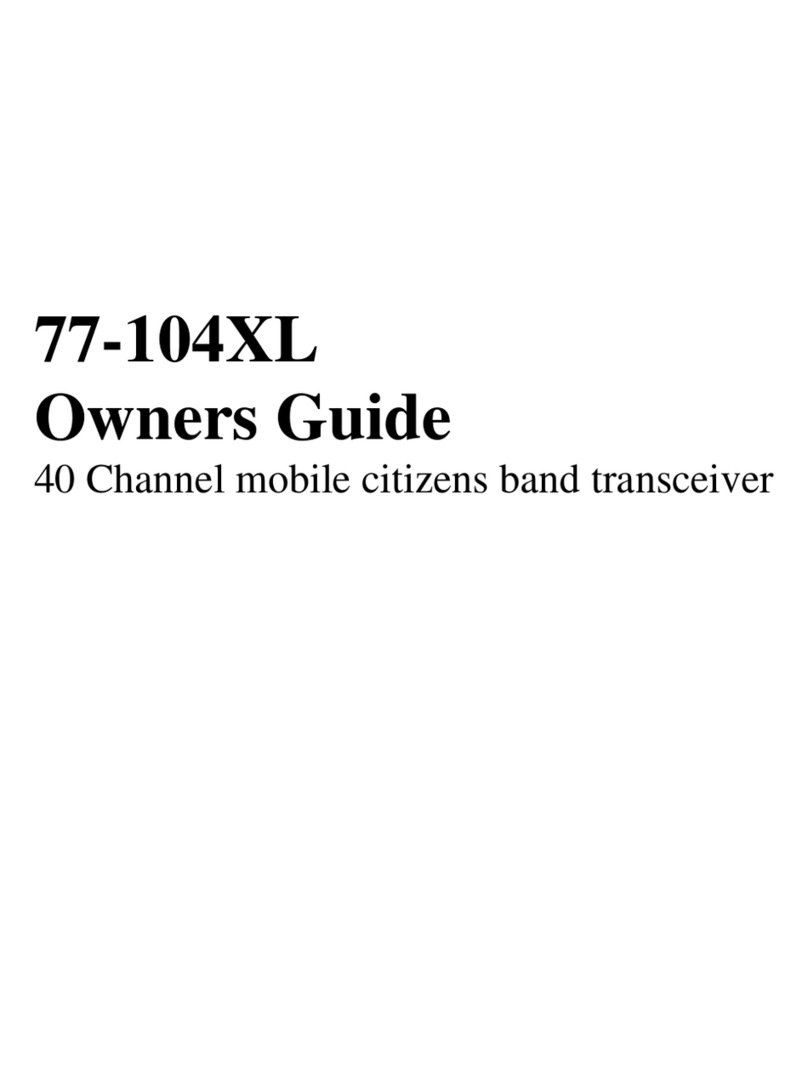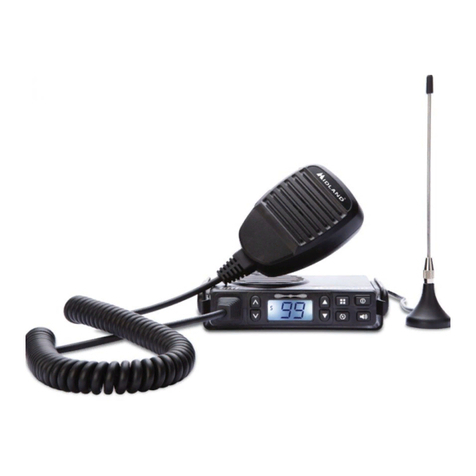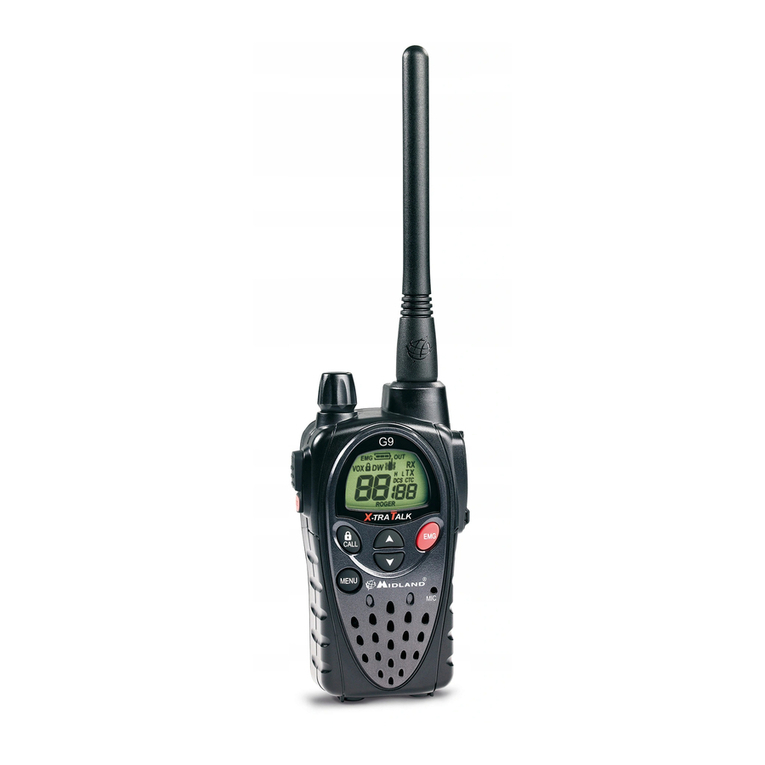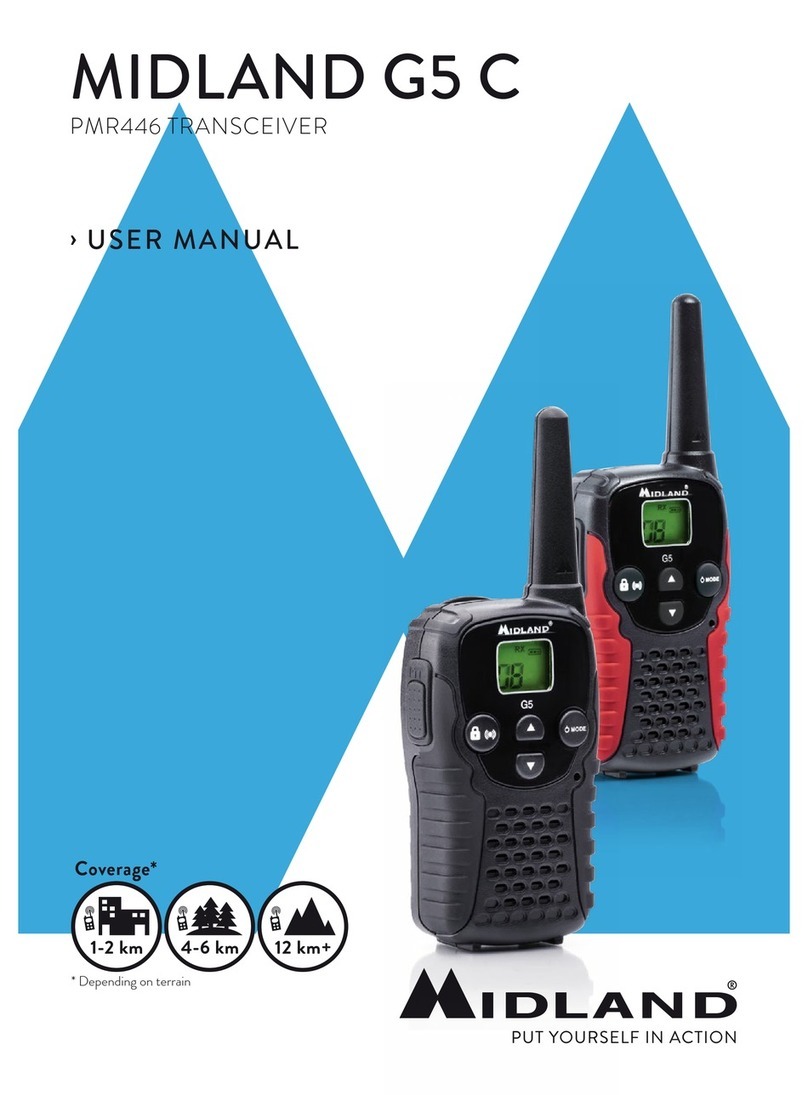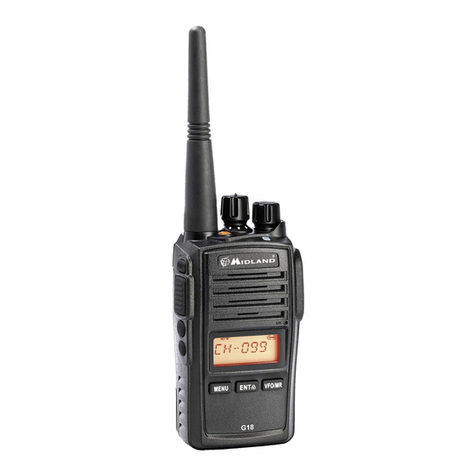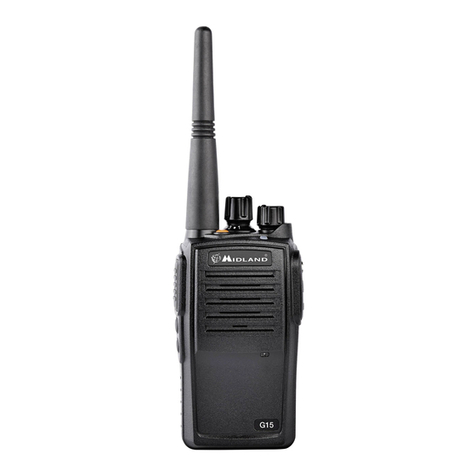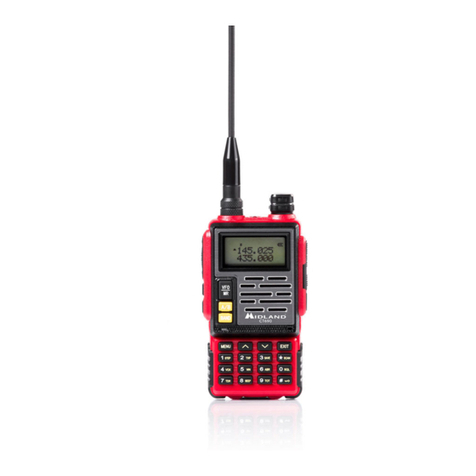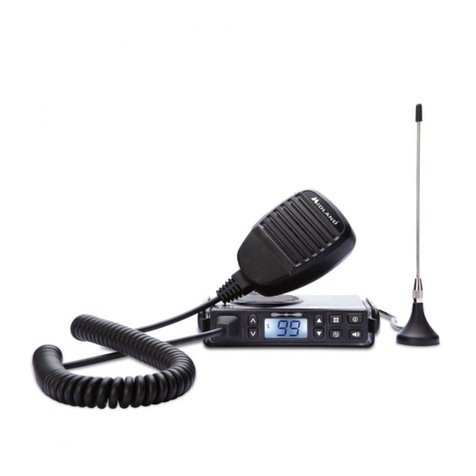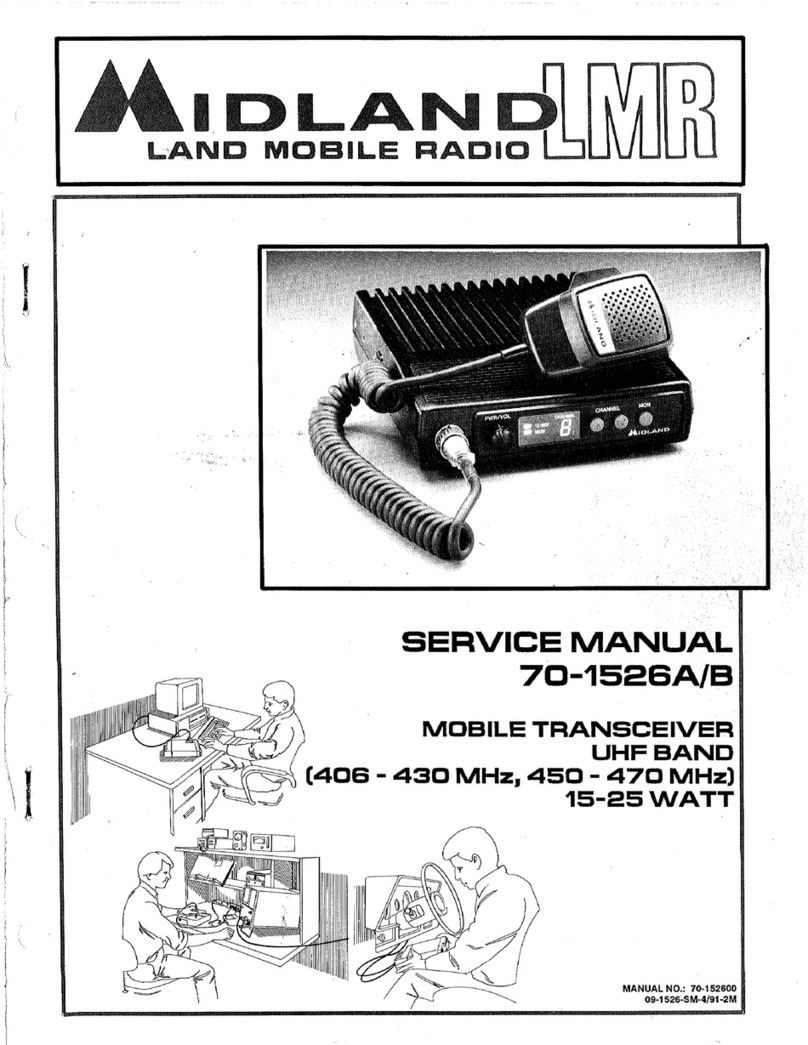TOA (Transmission Overtime Alarm) - MENU 10 12
Beep tone (BEEP) - MENU 11 12
Language of the MENU (LANGUAGE) - MENU 12 12
Busy channel lockout (BCL) - MENU 13 12
SCAN function(SC-REV) - MENU 14 13
Receiving with CTCSS tones (R-CTCSS) - MENU 15 13
Transmitting with CTCSS tones (T-CTCSS) --- MENU 16 13
Receiving with DCS codes (R-DCS) - MENU 17 14
Transmitting with DCS (T-DCS) - MENU 18 14
CALL/VFTX functions (side key PF1) - MENU 19 14
Scan / LAMP / SOS / Telealarm / Radio / Disable functions with
side key 3 (PF3) - MENU 20 15
Display backlight (ABR) - MENU 22 17
Frequency offset (OFF-SET) --- MENU 23 17
Frequency shift direction (SFT-D) - MENU 24 18
Stopwatch timer (SECOND) - MENU 25 18
Channel name (CHNAME) - MENU 26 18
Storing channels (MEM-CH) --- MENU 27 19
Deleting a channel (DEL-CH) ------ MENU 28 19
Scan of frequencies with CTCSS/DCS (SCNCD)
MENU 29 19
Welcome message (PONMSG) – MENU 30 20
Monitor (SP-MUTE) – MENU 31 20
Sending the ID code (ANI-SW) – MENU 32 21
Setting the ID ANI code (ani-edit) – MENU 33 21
DTMF (DTMF-ST) – MENU 34 21
Keypad lock (AUTOLOCK) - MENU 35 22
Setting the priority channel (PRICH-SW) - MENU 36 22
Repeater function / Full duplex (RPT-SET) - MENU 37 22
RPT-SPK - MENU 38 23
PTT - MENU 39 23
Adding a channel to scan (SCAN ADD) - MENU 40 23
Alert tone (ALERT) - MENU 41 23
ANI code tx delay (PTT-DLY) - MENU 42 24
